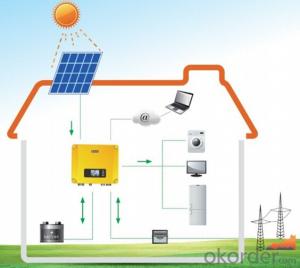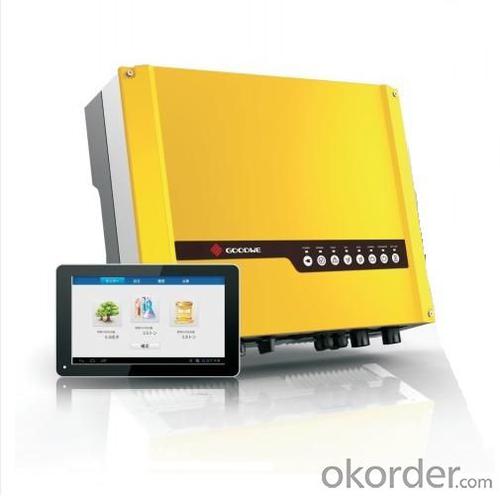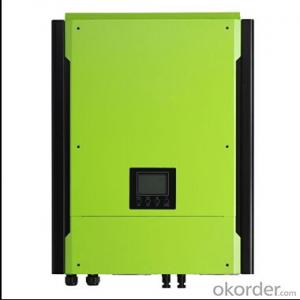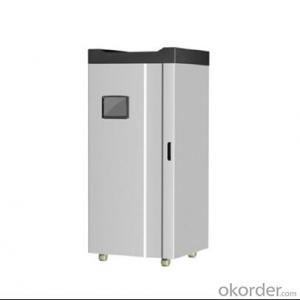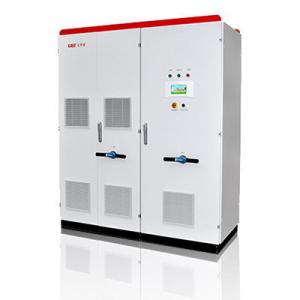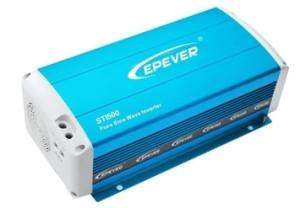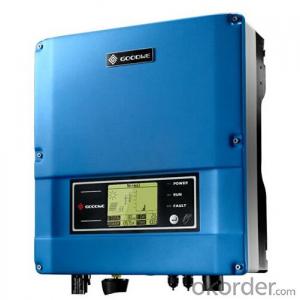Victron Solar Inverter Hybrid GW5048D-ES
OKorder Service Pledge
OKorder Financial Service
You Might Also Like
GW5048D-ES series bidirectional energy-storage inverter is applicable for both on-grid and off-grid PV systems and can control the flow of energy hybrid with its working situation able to be switched automatically or manually. During the day time, the PV plant generates electricity which can be provided to the loads, fed into the grids or charged the battery. The power stored can be released when the loads require it during the night. Additionally, power grid can also charge the storage devices via the inverter..
Datasheet
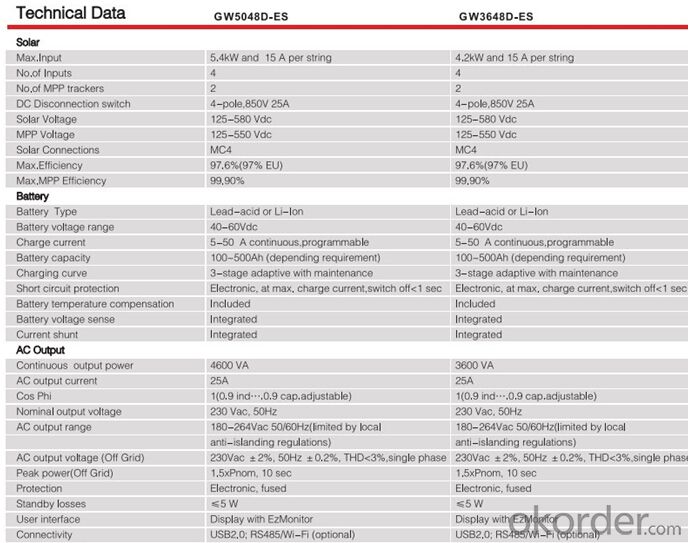
- Q: Can a solar inverter be used with a solar-powered air purification system?
- Yes, a solar inverter can be used with a solar-powered air purification system. A solar inverter is responsible for converting the direct current (DC) produced by solar panels into usable alternating current (AC) for powering electrical devices. In the case of a solar-powered air purification system, the solar inverter would convert the DC power generated by the solar panels into AC power that can be used to run the air purification system. This allows for the system to operate efficiently using clean and renewable solar energy.
- Q: Can I connect solar panels directly to the grid without an inverter?
- No, solar panels cannot be directly connected to the grid without an inverter. The inverter is necessary to convert the direct current (DC) generated by the solar panels into alternating current (AC) that is compatible with the electrical grid.
- Q: Can a solar inverter be used with a backup generator?
- Yes, a solar inverter can be used with a backup generator. In fact, this combination can provide a reliable and efficient power supply. The solar inverter converts the DC power generated by solar panels into usable AC power, while the backup generator can be used to supplement power during times when solar energy is insufficient or unavailable. This setup allows for a more sustainable and uninterrupted power supply.
- Q: Can a solar inverter be used with different types of electrical appliances?
- Yes, a solar inverter can be used with different types of electrical appliances. Solar inverters are designed to convert the direct current (DC) generated by solar panels into alternating current (AC) that is compatible with standard household appliances. As long as the electrical appliances operate on AC power within the inverter's specified power range, they can be used with a solar inverter.
- Q: What is the role of a solar inverter in preventing system failures?
- The role of a solar inverter in preventing system failures is to convert the direct current (DC) produced by solar panels into alternating current (AC) that can be used to power electrical devices. By continuously monitoring the performance of the solar system and ensuring the optimal conversion of power, the inverter helps to prevent issues such as voltage fluctuations, overloading, and short circuits. It also provides vital protection by promptly detecting and responding to any faults or abnormalities in the system, thereby minimizing the risk of system failures and maximizing the overall efficiency and reliability of the solar power generation.
- Q: How does a solar inverter handle voltage and frequency variations caused by voltage sags and swells?
- Voltage and frequency variations caused by voltage sags and swells are effectively managed by the diverse mechanisms equipped in a solar inverter. When there is a voltage sag or swell in the electrical grid, the solar inverter employs a technique known as Maximum Power Point Tracking (MPPT) to regulate the power output from the solar panels. During a voltage sag, where the grid voltage drops below the standard level, the solar inverter adjusts its MPPT algorithms to ensure that the solar panels continue operating at their maximum power point. This guarantees that the inverter extracts the most available power from the panels and compensates for the reduced grid voltage. By dynamically adjusting the operating point of the panels, the inverter mitigates the effects of the voltage sag and maintains an optimal power output. Similarly, in the case of a voltage swell, where the grid voltage exceeds the normal level, the solar inverter once again utilizes its MPPT capabilities to regulate power output. It adjusts the panels' operating point to prevent them from surpassing their rated voltage, thereby safeguarding them from potential damage. This allows the inverter to effectively handle the increased grid voltage and prevent any negative impact on the solar panels. Aside from voltage regulation, a solar inverter also addresses frequency variations caused by voltage sags and swells. It is designed to synchronize with the grid frequency and uphold a stable output frequency. When the grid frequency deviates from the normal range, the inverter adapts its internal control systems to match the grid frequency. This synchronization ensures that the power output from the inverter aligns with the grid requirements, facilitating seamless integration of solar energy into the electrical system. In conclusion, a solar inverter effectively manages voltage and frequency variations caused by voltage sags and swells by utilizing MPPT algorithms, voltage regulation mechanisms, and frequency synchronization capabilities. These features enable the inverter to adapt to changing grid conditions, maximize power extraction from the solar panels, and maintain a stable and reliable power output.
- Q: What is the efficiency rating of a solar inverter?
- The efficiency rating of a solar inverter refers to the percentage of solar energy that is converted into usable electricity. It indicates how effectively the inverter can convert the direct current (DC) power generated by solar panels into alternating current (AC) power for use in homes or businesses. Higher efficiency ratings mean less energy loss during the conversion process, resulting in more electricity being available for consumption.
- Q: What is the maximum input voltage for a solar inverter?
- The maximum input voltage for a solar inverter depends on the specific model and manufacturer. It can vary, but generally, solar inverters can handle input voltages ranging from 300 to 1000 volts.
- Q: What is the role of a solar inverter in reactive power compensation during grid disturbances?
- The role of a solar inverter in reactive power compensation during grid disturbances is to regulate and manage the reactive power flow between the solar panel system and the grid. During grid disturbances, such as voltage fluctuations or power factor variations, the solar inverter helps maintain a stable and balanced flow of reactive power, ensuring efficient and reliable operation of the solar panel system while minimizing the impact on the grid.
- Q: How does a solar inverter handle voltage sags and swells?
- A solar inverter handles voltage sags and swells by continuously monitoring the input voltage. When it detects a sag or swell, it adjusts its internal voltage control mechanism to compensate for the variation. This ensures that the output voltage from the inverter remains stable and within the desired range, protecting the connected solar panels and electrical systems from potential damage.
Send your message to us
Victron Solar Inverter Hybrid GW5048D-ES
OKorder Service Pledge
OKorder Financial Service
Similar products
Hot products
Hot Searches
Related keywords

